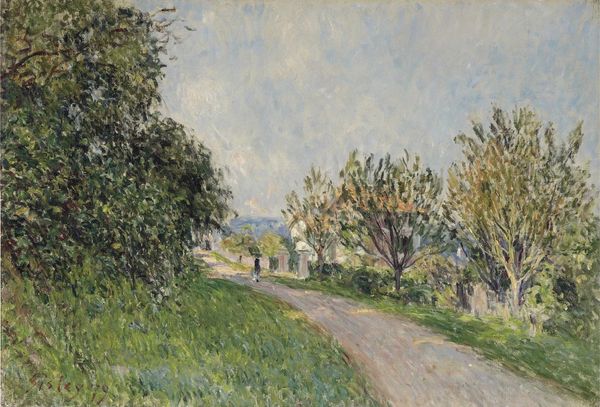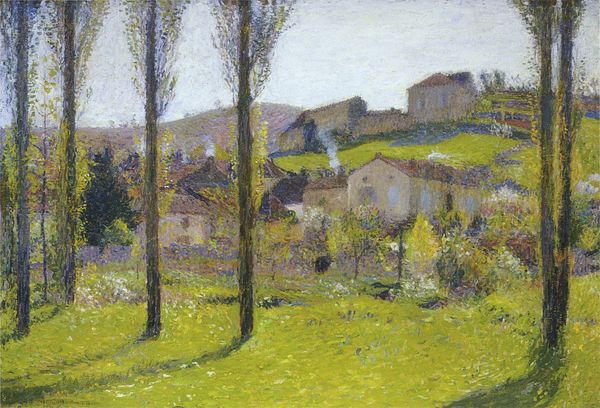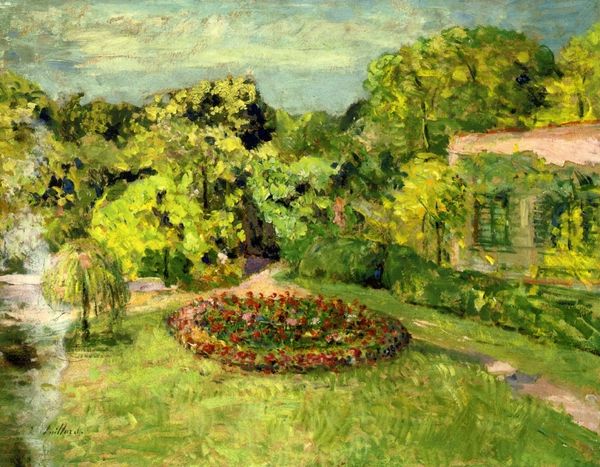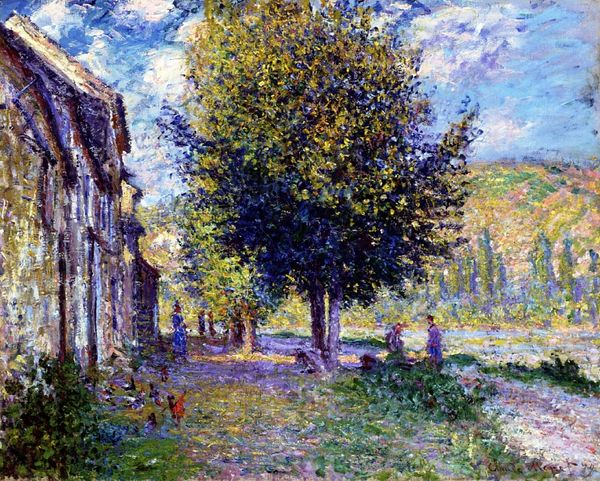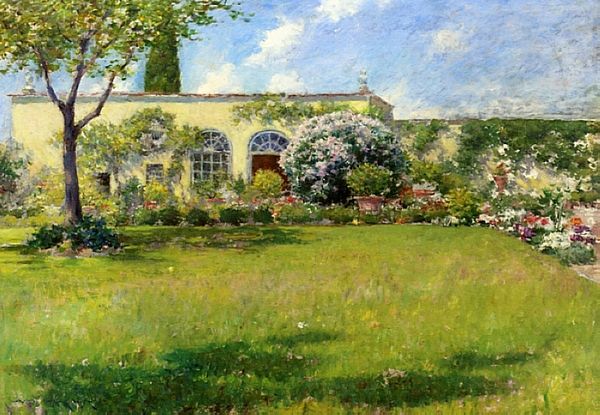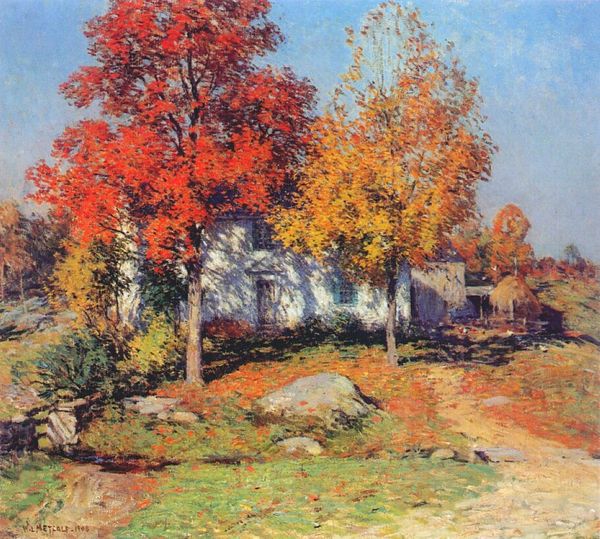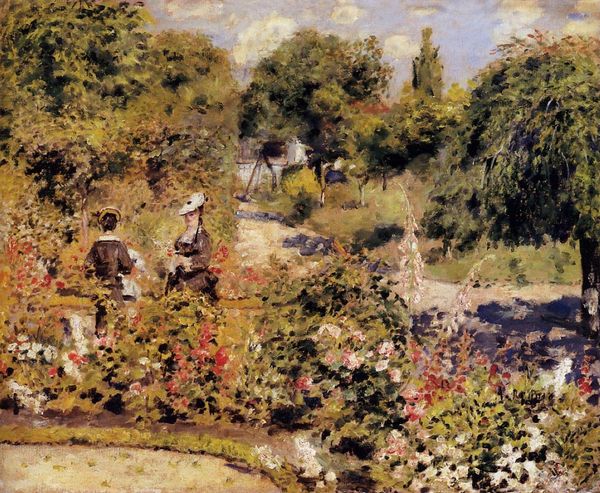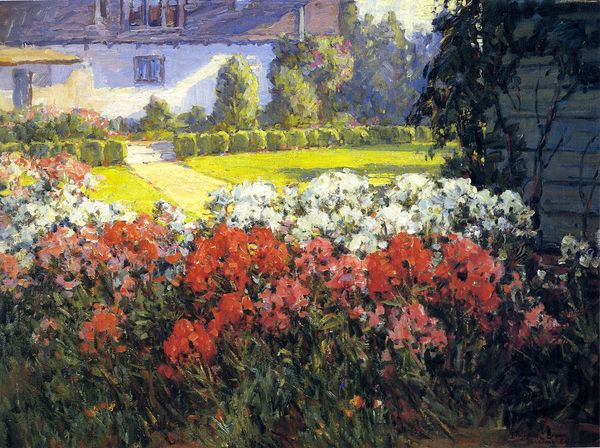
#
tree
#
garden
#
tropical
#
countryside
#
landscape
#
flower
#
house
#
impressionist landscape
#
nature
#
forest
#
plant
#
naturalistic tone
#
seascape
#
natural-landscape
#
greenery
#
nature environment
#
coastline landscape
#
park
#
natural environment
#
building
Dimensions: 54 x 65 cm
Copyright: Public domain
Gustave Caillebotte painted "Farmer's House in Trouville," using oil on canvas, capturing a slice of French rural life during the late 19th century. Caillebotte, himself from a privileged background, often depicted scenes of leisure and modernity, but here, he turns his eye towards the countryside. This painting encapsulates the intersection of class and leisure during the Impressionist era. The garden, with its vibrant flowers, frames a modest farmhouse, hinting at the lives of those who cultivated the land. It prompts us to consider the relationship between the bourgeoisie and the working class, and how spaces like gardens served as both a retreat and a site of labor. Caillebotte's choice of subject invites us to reflect on the romanticized view of rural life held by city dwellers. As you gaze upon this scene, consider the lives of the farmers who inhabited this house, their daily routines, and their connection to the land. How does Caillebotte’s painting either reinforce or challenge traditional representations of rural life, and what does it tell us about the social dynamics of his time?
Comments
No comments
Be the first to comment and join the conversation on the ultimate creative platform.





